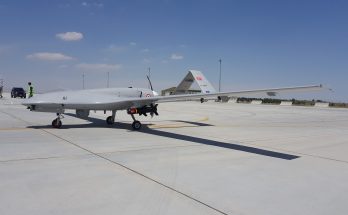by Dan Darling, International Military Markets Analyst, Forecast International.
During his visit to Hanoi on May 23, President Barack Obama announced the full lifting of a long-standing U.S. ban on weapons sales to Vietnam. The move comes as the militaries of both nations push for closer relations, with the U.S. Navy in particular hoping to see an increase in port visits to Vietnam and access to port facilities in Vietnam’s Cam Ranh Bay.
The arms embargo has been in place in some form since the end of the Vietnam War in the early 1970s.
The U.S. has been steadily deepening military-security ties with Vietnam since the 2000s, with a first step toward restoring normalized ties taken in 2007 when the U.S. modified its International Traffic in Arms Regulations (ITAR) stance in order to allow licenses for trade of select non-lethal defense items to Vietnam. Up to then, these sales had generally consisted of minor elements such as ship radios and spare parts for helicopters. In fiscal year 2009, the U.S. also began extending Foreign Military Financing (FMF) credits to Ho Chi Minh City.
However, ongoing concerns in Washington over Vietnam’s communist government’s human rights record remained a major stumbling block in restoring full defense trade ties. Elements in Congress remained wary of ending the embargo without seeing improvement in this area from the Vietnamese government, and in 2013 Congress passed a resolution – HR 1897 (Vietnam Human Rights Act of 2013) – that prevented non-humanitarian assistance to Vietnam exceeding FY12 totals unless Vietnam’s policies and practices on human rights were seen to have improved.
Nonetheless, momentum toward full lifting of the embargo had been building for years, with the U.S. State Department announcing on October 2, 2014, that it would allow limited sales going forward on a case-by-case basis. Defense Secretary Ash Carter then publicly advocated for an end to the ban on April 28 during a hearing before the U.S. Senate Arms Services Committee (SASC). That partial lifting of the weapons export ban on Vietnam came as tensions between Hanoi and China continued to increase over competing claims in the South China Sea. Seeing former foe Vietnam as a logical partner in leveraging a larger alliance against the maritime outreach and expansionist aims of China, the United States began warming ties with Hanoi.
In terms of defense trade, Vietnam currently purchases around 90 percent of its imported hardware from long-standing partner Russia. The lifting of the ban enables Vietnam to continue upgrading its naval early-warning and surveillance capabilities – a crucial step in helping it to counter China’s increasing naval presence in its nearby waters. Vietnam has previously made public its interest in acquiring Boeing’s P-8 Poseidon maritime reconnaissance aircraft.
There is a double benefit to any U.S. arms exports to Vietnam – first by potentially diluting Russia’s export market, and second by binding Vietnam more closely in a pragmatic-but-unspoken form of alliance with the U.S. However, Vietnam will proceed slowly in relations with the U.S. for fear of antagonizing China, and will be careful not to give off any impression that it is relinquishing any form of sovereignty in order to attain U.S. military and diplomatic support as a buffer against Beijing. Further, Vietnam is less interested in acquiring expensive platforms from the U.S. than in enabling its own nascent defense industry to glean know-how from its American counterparts via offset arrangements and defense technological agreements.
Please feel free to use this content with Forecast International and analyst attributions, along with a link to the article. Contact Ray Peterson at +1 (203) 426-0800 or via email at ray.peterson@forecast1.com for additional analysis.
The Forecast International International Military Markets series examines the military capabilities, equipment requirements, and force structures inventories of 140 countries, with corresponding coverage of the political and economic trends shaping the defense market outlook for individual countries and regions.
For 50 years, Forecast International intelligence reports have been the aerospace and defense industry standard for accurate research, analysis, and projections. Our experienced analysts compile, evaluate, and present accurate data for decision makers. FI's market research reports offer concise analysis of individual programs and identify market opportunities. Each report includes a program overview, detailed statistics, recent developments and a competitive analysis, culminating in production forecasts spanning 10 or 15 years. Let our market intelligence reports be a key part of reducing uncertainties and mastering your specific market and its growth potential. Find out more at www.forecastinternational.com




